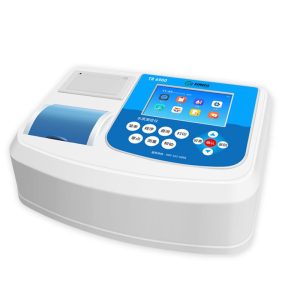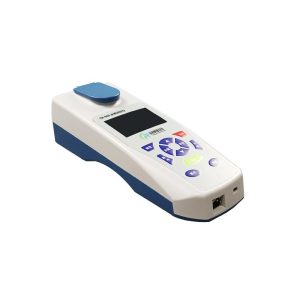Application of water quality analyzer in water quality testing of swimming pool
Water quality testing is essential for the management of swimming pools. It can ensure the health and safety of the swimming pool, protect the health of swimmers, and provide a good swimming experience. Through water quality testing, key indicators in swimming pool water can be monitored, such as residual chlorine, pH, dissolved oxygen, total alkalinity, turbidity, etc., as well as the possible presence of bacteria, viruses, and other contaminants. In this way, water quality problems can be detected in time and necessary regulatory measures can be taken to ensure that the swimming pool water body is clean, sterile, and in compliance with hygiene standards and regulatory requirements. This will not only help prevent the spread of pool-related diseases, but also improve the comfort and satisfaction of swimmers, while protecting the lasting use of pool facilities.
Swimming pool water quality testing needs to pay attention to the following indicators to ensure that the water quality meets health and safety standards:
Free residual chlorine: Disinfectants added to swimming pools, such as chlorine, can form free residual chlorine. The appropriate concentration of free residual chlorine can effectively eliminate bacteria and viruses in water.
Total residual chlorine: Total residual chlorine includes free residual chlorine and bound residual chlorine and is used to evaluate the overall effect of the disinfectant.
Application of water quality analyzer in water quality testing of swimming pool
pH: The pH of the pool water should be in the appropriate range (usually 7.2-7.8) to ensure that the water is not irritating to the skin and eyes and that it can maintain the effectiveness of the disinfectant.
Water temperature: The control of water temperature is essential for the comfort of swimmers.
Turbidity: Turbidity indicates the amount of suspended matter in the water, and high turbidity may affect the transparency and visual effect of the water.
Pool pH (TA) : TA is an overall indicator of the acidity and alkalinity of swimming pool water, which is essential for maintaining the stability and suitability of the water body.
Swimming pool hardness (CH) : Hardness indicates the content of calcium and magnesium ions in the water, and a suitable hardness helps prevent scale and corrosion problems.
Pool alkalinity (CYA) : CYA is the amount of stabilizer in the pool, which protects free residual chlorine from the sun’s ultraviolet rays.
Swimming pool Cyanouric acid (CYA) : CYA is the amount of sunscreen that can help reduce a swimmer’s skin’s sensitivity to UV rays.
In addition, swimming pool water quality needs to be regularly tested and monitored in accordance with relevant regulations and standards to ensure that the water quality meets health and safety requirements. The frequency and requirements for water quality testing may vary by region and by regulation. Therefore, it is recommended to follow the local water quality testing requirements in the operation and maintenance of the swimming pool, and regularly test and adjust the swimming pool water. Generally, the water quality analyzer is used for testing, and the detector with corresponding parameter function should be selected.

Application of water quality analyzer in water quality testing of swimming pool
Method of detection
When using a water quality tester to test the water quality of a swimming pool, you can follow the following steps:
Prepare the test instrument: Ensure that the water quality test instrument is calibrated and prepare the required sensors, electrodes or test boxes according to the instruction manual.
Select the corresponding detection method according to the parameters to be measured: the common parameters of swimming pool water quality include residual chlorine, pH value, dissolved oxygen, total alkalinity, turbidity, etc. According to the need, select the corresponding detection method and test scheme.
Take water samples: Take samples from the swimming pool to ensure that the water samples are representative. Special water sample collection containers can be used to avoid contamination or other effects on the sample.
Conduct water quality testing: according to the selected detection method, add the water sample to the testing instrument, or insert the sensor or electrode into the water sample and measure according to the instructions of the instrument.
Record and interpret the results: Record the measurement results and interpret the results according to the set standards or guidelines. Compare the measurement results with applicable water quality standards to assess the sanitary status of the water body.
Take necessary measures: According to the measurement results, if water quality problems are found or exceed the allowable range, take corresponding measures to adjust and correct. This may include adding disinfectants, adjusting pH, increasing or decreasing the amount of chemicals applied, etc.
Regular monitoring: Conduct regular water quality tests to ensure the ongoing hygiene and safety of the pool water body. As needed, a monitoring plan can be developed, including testing frequency and monitoring parameters.
Application of water quality analyzer in water quality testing of swimming pool
It is important to use the correct instruments and methods for water quality testing and to follow the relevant operating codes and safety measures. If unsure how to operate, it is recommended to consult a professional or follow the instructions for the use of the instrument.

Through the use of water quality analyzers, pool managers can timely understand the condition of the pool water body and take necessary regulatory measures to ensure that the water quality meets the health standards and regulatory requirements, so as to provide a safe and clean swimming environment for swimmers.
